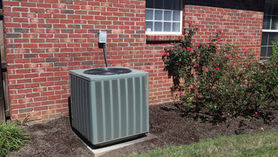

Jul 22, 20215 min read


May 14, 20212 min read


May 14, 20212 min read


May 14, 20212 min read


May 12, 20211 min read


May 11, 20213 min read


May 11, 20212 min read


May 11, 20213 min read


May 9, 20218 min read


May 6, 20214 min read
With poured concrete retaining walls, backfill is placed between the wall and the slope after the wall is constructed; therefore, many engineers call the retained soil behind a retaining wall as backfill.
A gravity retaining wall “L” shape, as exemplified in this sketch, was chosen for our video, because it is one of the most common types of retaining walls.
This is called gravity retaining walls because the weight of the materials behind the wall, and the volume of the wall itself, as long as the wall is monolithic and solid, will maintain its stability by gravity.
The building of this type of wall, although seemingly complicated, it’s the simplest and most efficient general design.
Probably that is why many engineers prescribe this type of wall for most of the not-so-drastic terrains, because it is a simpler solution and cost-efficient.

We made a retaining wall video to explain all that you find in this page. But we also have the answers here for people like you who prefer to read.
In simpler language, they support soil, which would otherwise collapse at the natural state.
And it most likely would happen, under stresses of the weather, or even during seismic events.
Hopefully, you got an engineer to design your Retaining wall.
An engineer will take in consideration, soils reports, slope-bend analysis, and other essential pieces of information.
There are some procedures that we do not expect everyone to understand, But they are important for everyone’s safety.
Most of the supported soil, after a retaining wall is built, is sometimes referred to as backfill.
Here is a video illustrating the need of a properly engineered wall, that will help you understand it further and follow the recommendations in our video.
• The soil that goes behind the retaining wall, it is what you want to contain.
• This soil has to be removed and replaced at the end, so it has to be stored for a while.
• Soils have to be properly compacted and with other safety devices built into it, to reduce the loads behind the wall.
You will see what I am talking about by watching our video below.
Ok, now that you know what a Retaining wall is, and what a retaining wall does, we go to the next step. I will give you the 5 major steps for building the most used type of retaining walls: Which I mentioned before, it is a “L”-shaped gravity wall. But, before anything, don’t forget to subscribe on our YouTube channel, click on the bell and leave your comments. If you do that, you will help us make more videos like the ones posted in this article. Or you can hire us to do a video sponsored by you, whatever works best for you.






























Comments